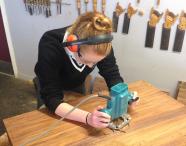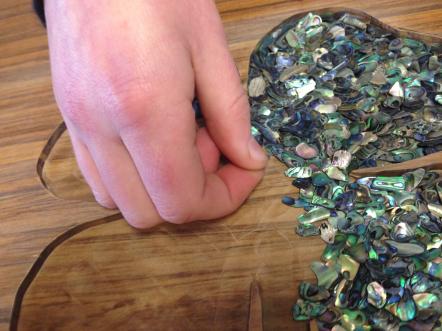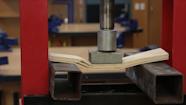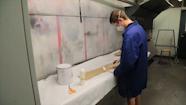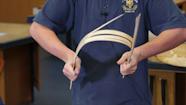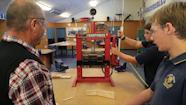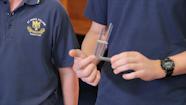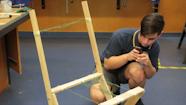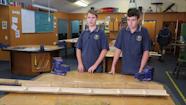Year 12 student outcome: Coffee table
This resource gives an example of a stellar student outcome and describes key aspects of the project and assessment opportunities.
Sarah's outcome | Modelling and resourcing | Assessment opportunities
Sarah's outcome
In year 12 students find their own issue from a given context for their technology projects.
My mother needs a storage area in the lounge to place drinks and plates of food and provide storage for magazines and the TV remotes. This will solve the problems of spilling drinks and not being able to find the TV remote. Also, the dog is tempted to eat food if a plate is placed on the floor.
Sarah Warrington
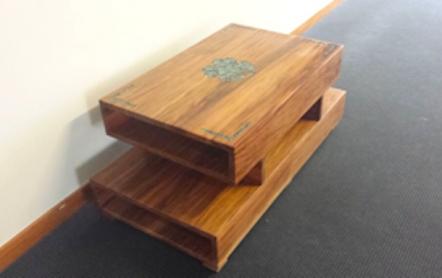
The height of the coffee table had to suit its purpose and the space between the base and top had to provide adequate storage for books, magazines, and blankets. The client commented, “it fits everything from board games to blankets and I can even slide in my biggest crosswords dictionary!"
Modelling and resourcing
- A local joinery company provided advice on an effective process when designing furniture for a client.
- Sarah explored existing solutions and presented conceptual designs to the client.
- She made a scaled 3D model, which gave the client a crystal clear idea of the look of the finished model.
- The table was made from yakka – a colour suiting the room and matching an existing piece of furniture.
- After exploring several options, Sarah chose three coats of polyurethane and a final wax as the finishes for the table. She tested the effect of hot plates, water, nail polish remover, and general scuffing on the surface. As a result of these tests, she advised the client to use a table mat under hot plates and mugs and to keep nail polish remover away from the finished surface.
- Biscuit joints were used to reinforce the butt joints on the table to ensure the carcase was reinforced and strong.
- Sarah explored glass, wood, and paua as possible materials for the decorative inlay. Paua was the preferred option. The client was asked to rate six different pencil sketch designs for the paua inlay. This proved an efficient method of modelling these ideas and allowed the project to progress. The clover-leaf design appealed to the client because she had Irish ancestry. Time spent individually placing each piece of paua to create the clover-leaf design was valuable because it produced a solid blue-green effect that the client admired.
- Resin was poured over the paua once it had been laid out.
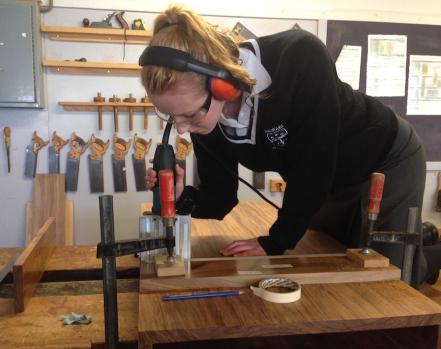
Assessment opportunities
Related videos
Finding materials to meet the specs (02:36)
Steve Andrew shares how students identify material specifications in a brief and then test materials to find those that are suitable....
Pushing the boundaries with materials (02:53)
Steve Andrew describes how his senior students have the confidence to select and work with unfamiliar materials.
Exploring unfamiliar materials (02:44)
Year 12 students from St John's College describe what they know about bamboo and how they are applying this knowledge to their projects....
Students and teachers talk about testing materials in year 11.
Manipulating, forming, and transforming
Students in year 10 describe manipulating, forming, and transforming materials.
Evaluating materials for an outcome
Steve Andrew and students talk about using their knowledge to test materials for their projects at year 12.
Senior students select their own issues
Year 12 students talk about the issues that they have selected for their projects.

